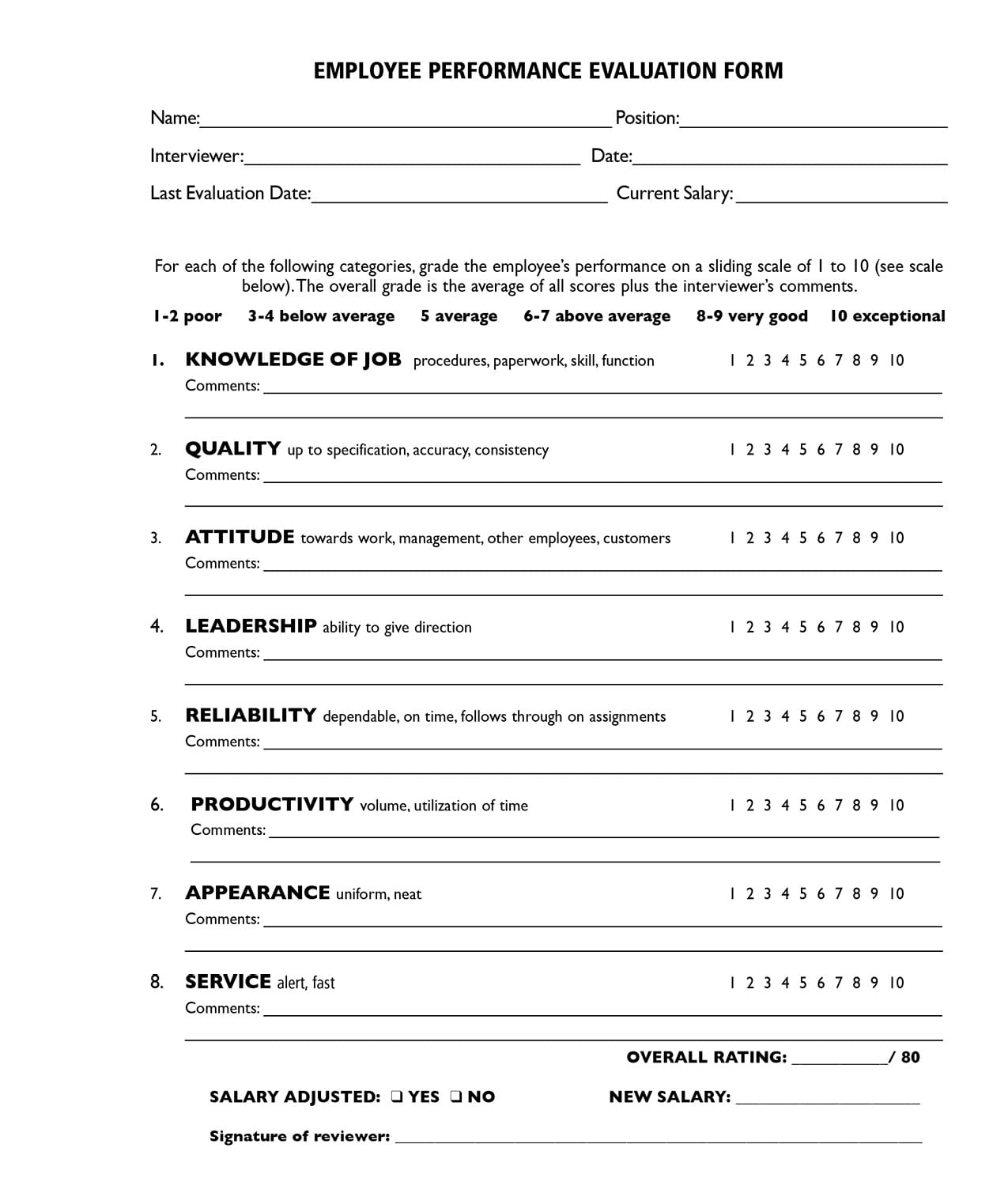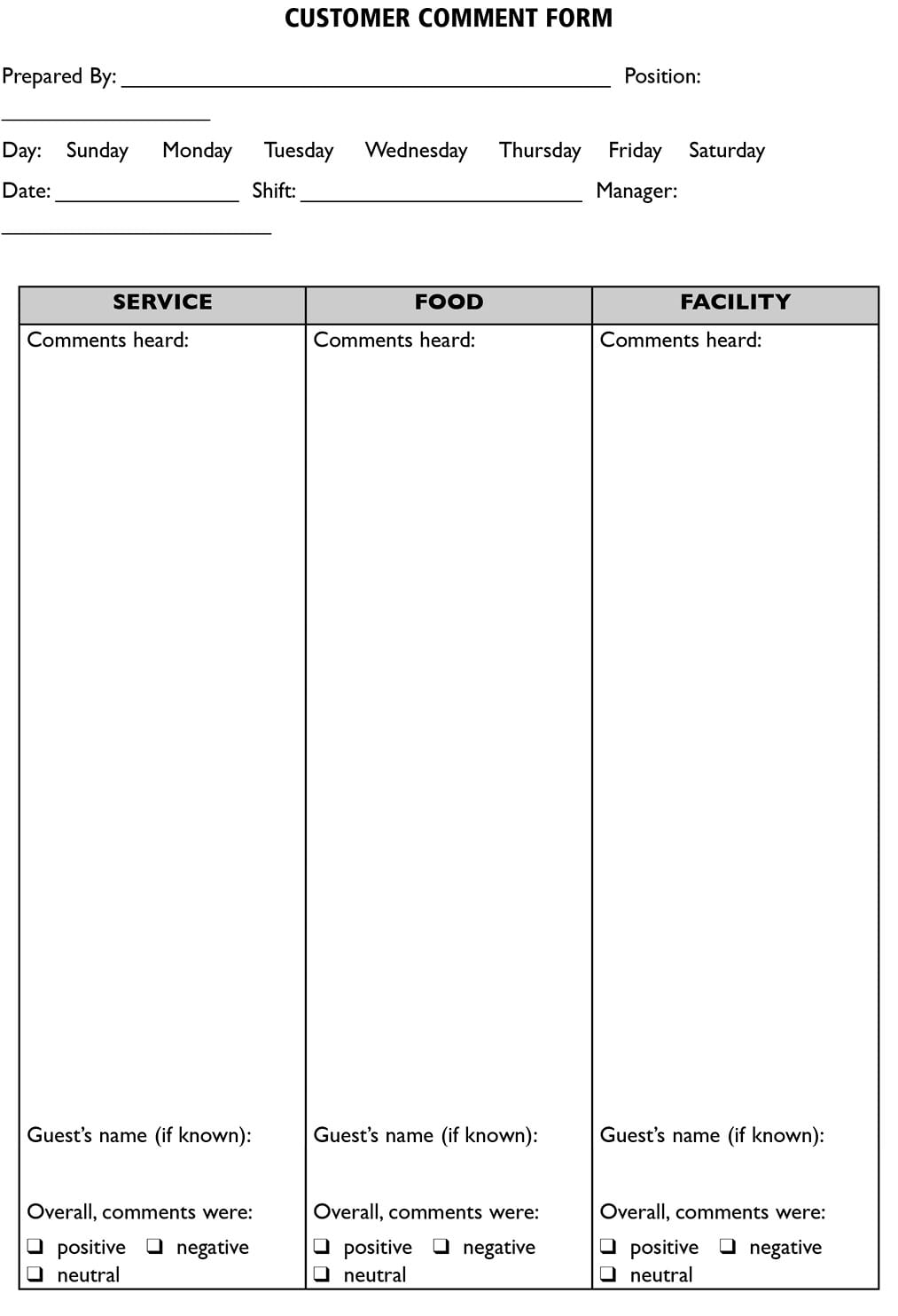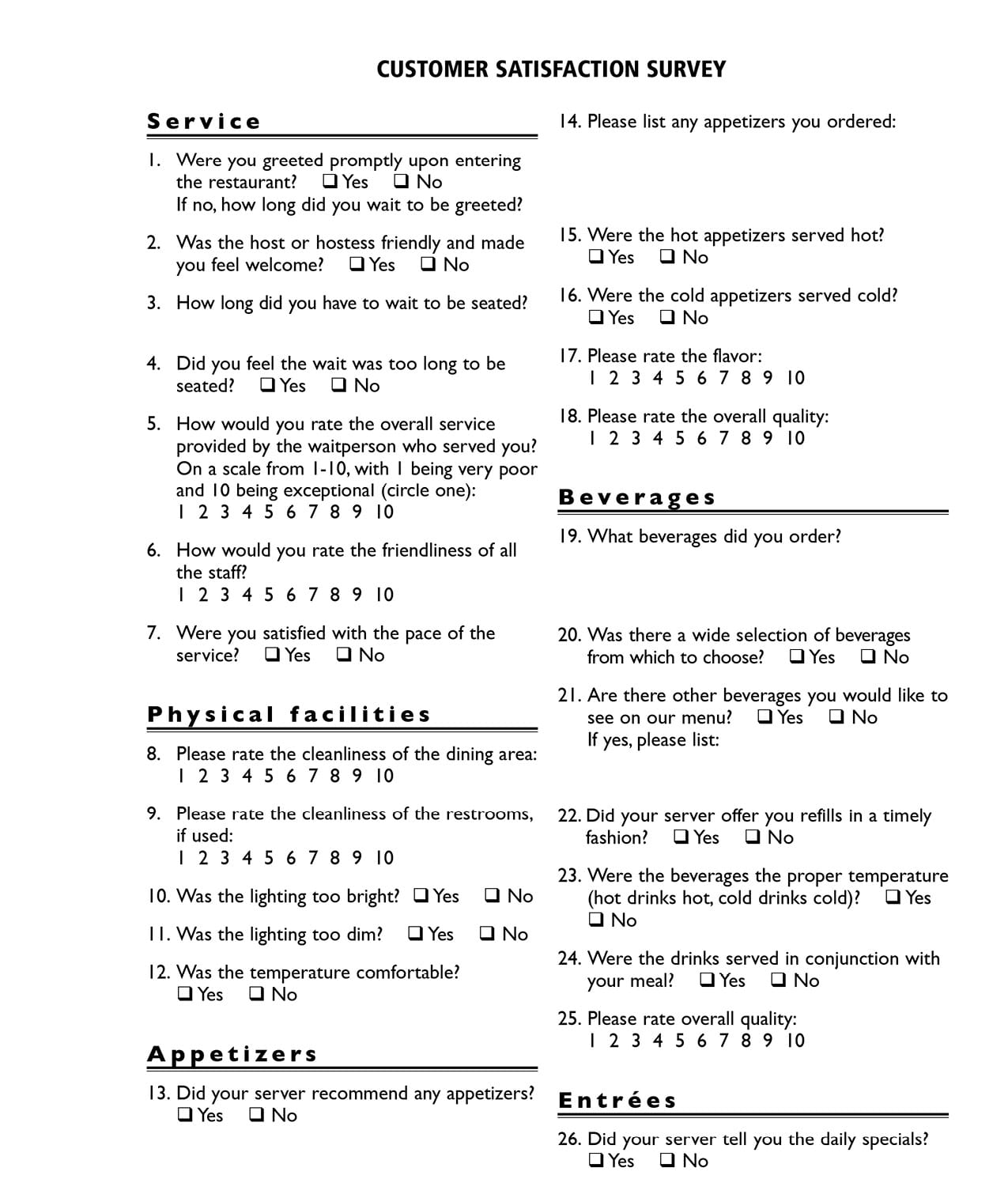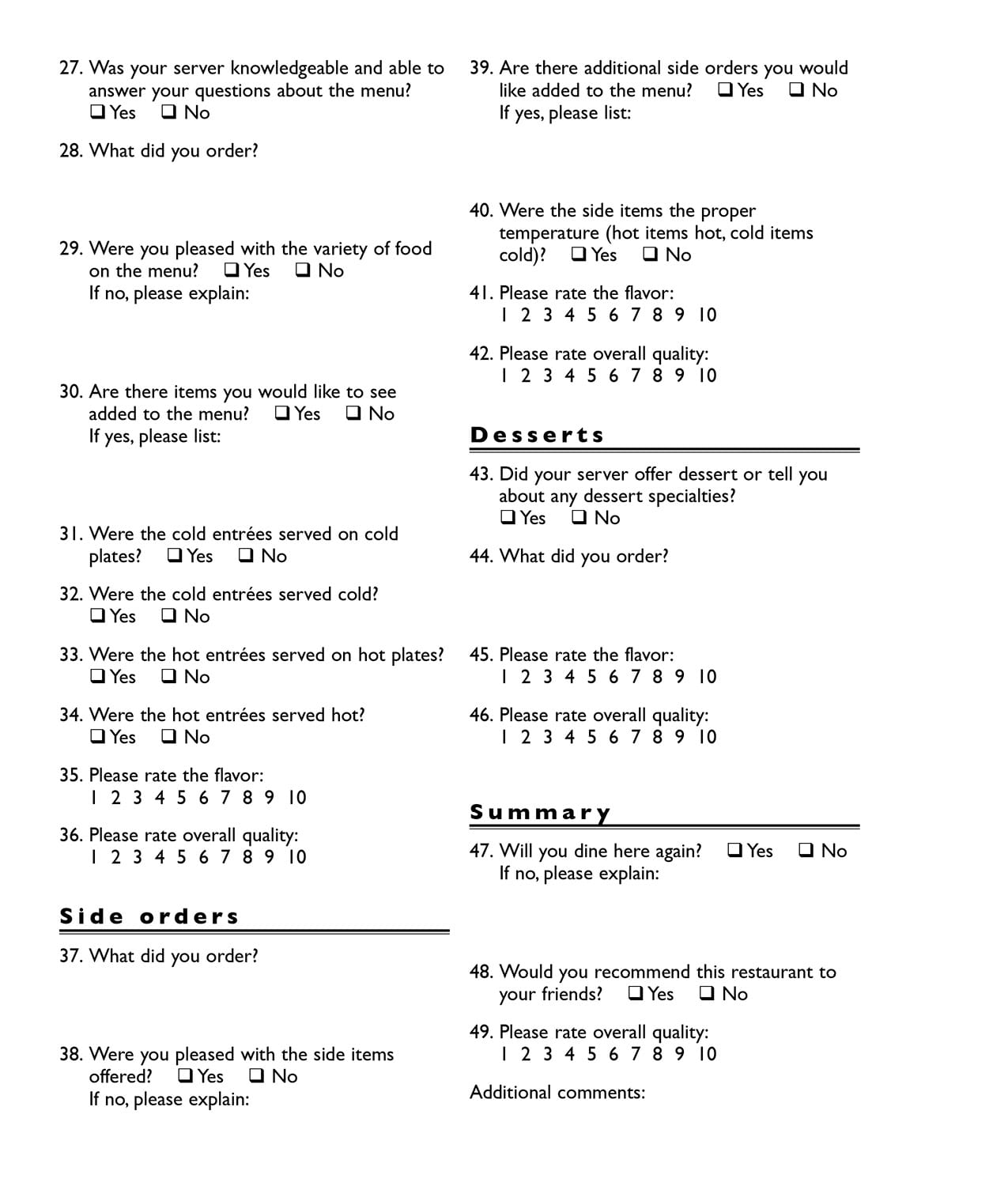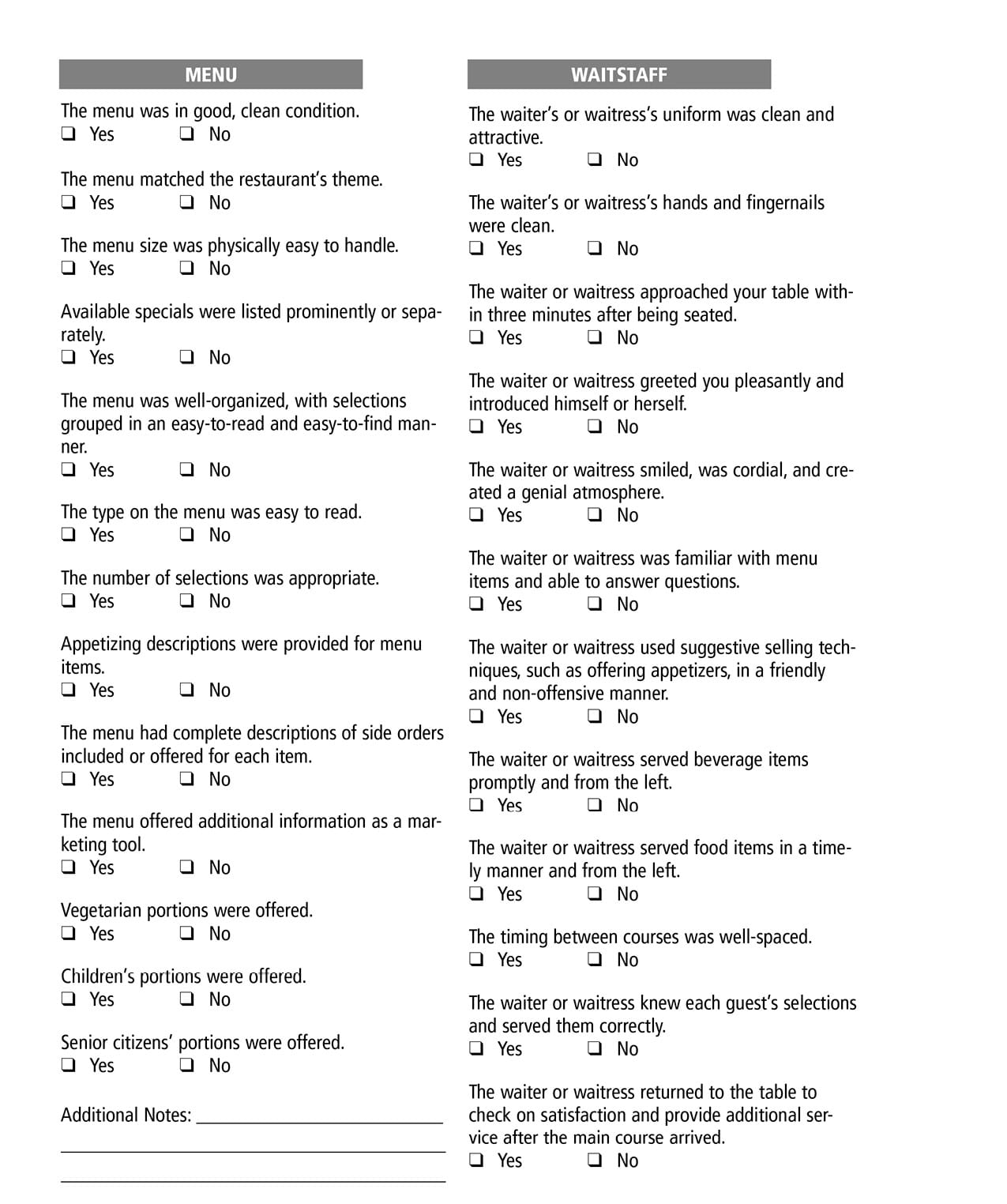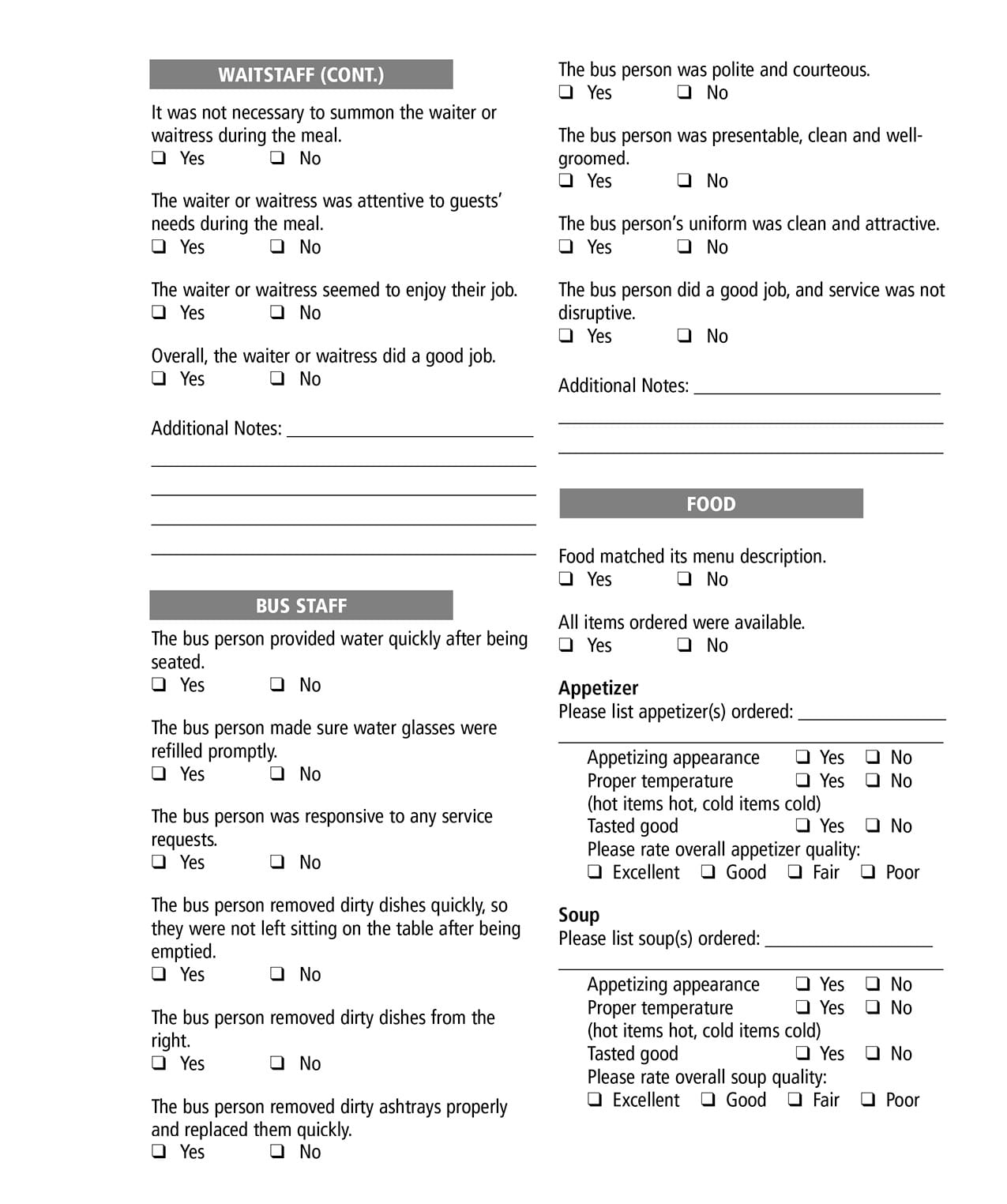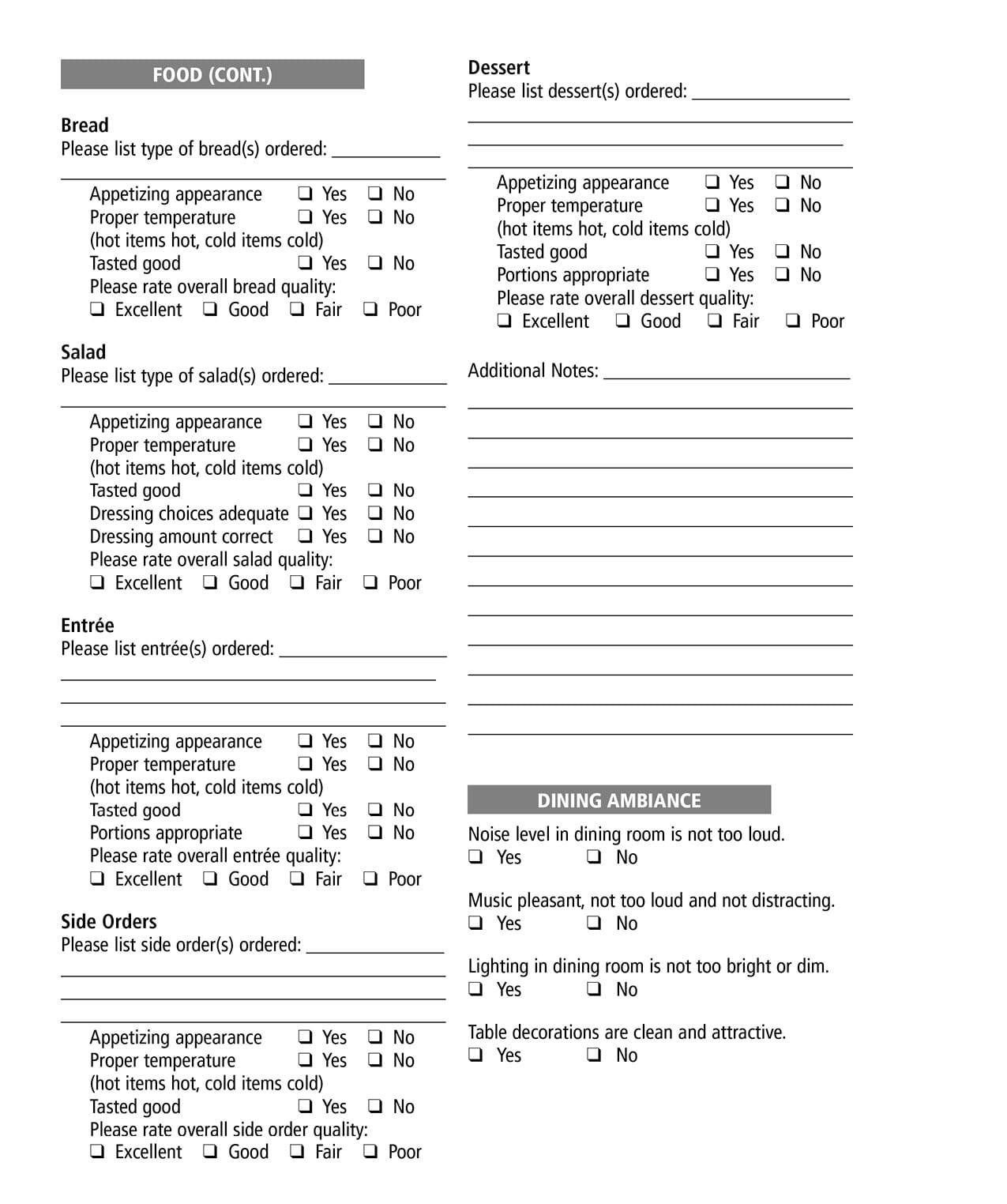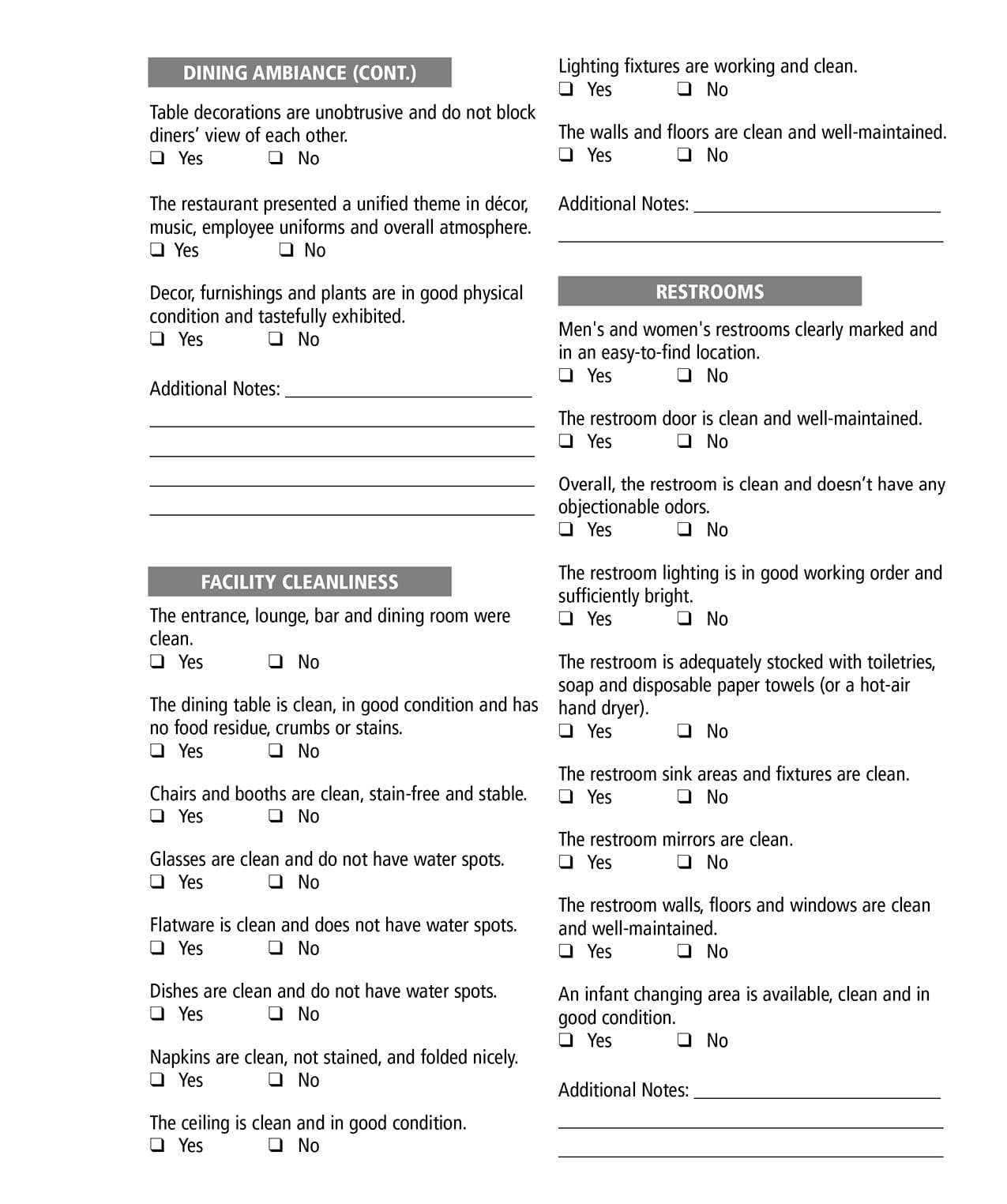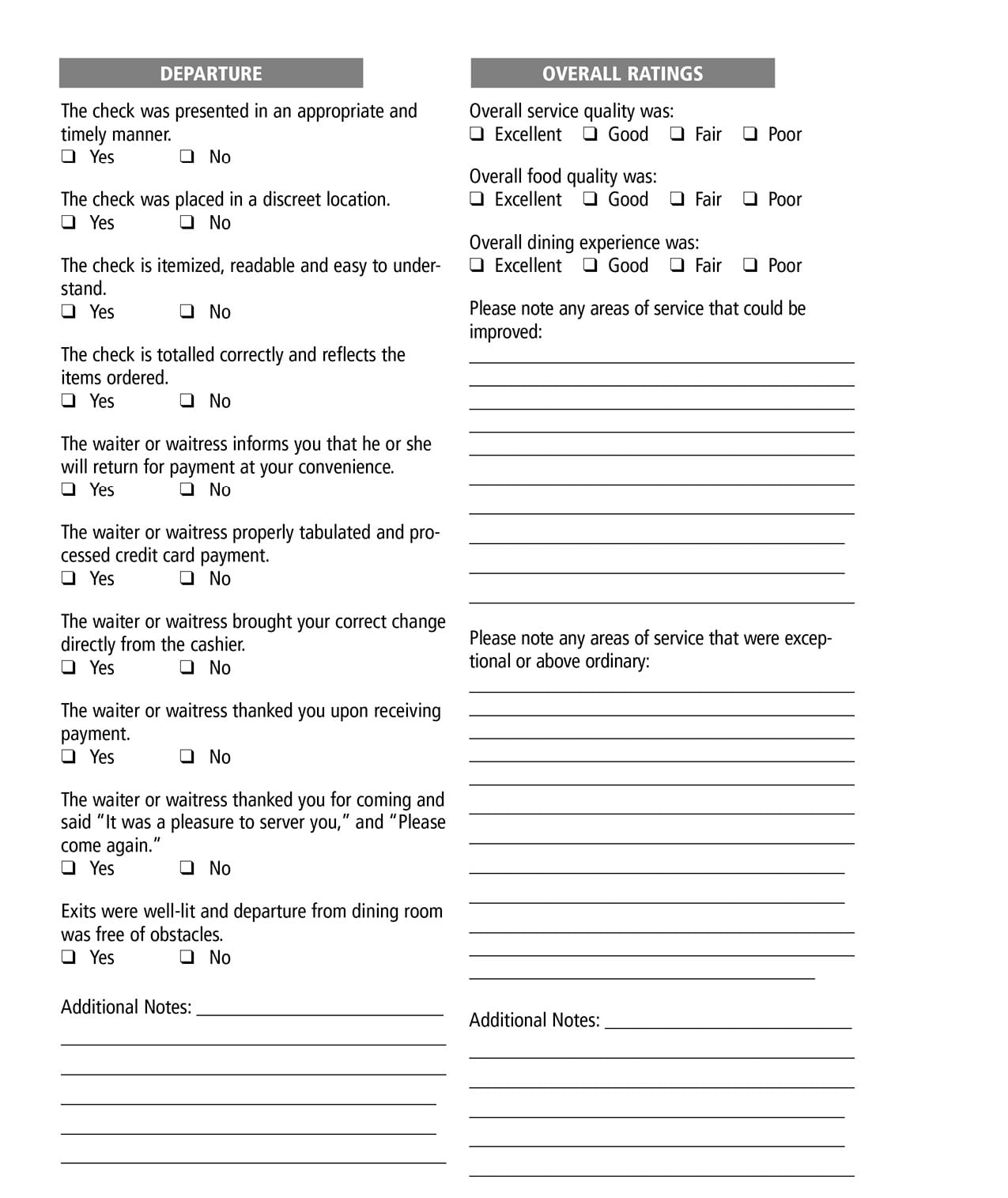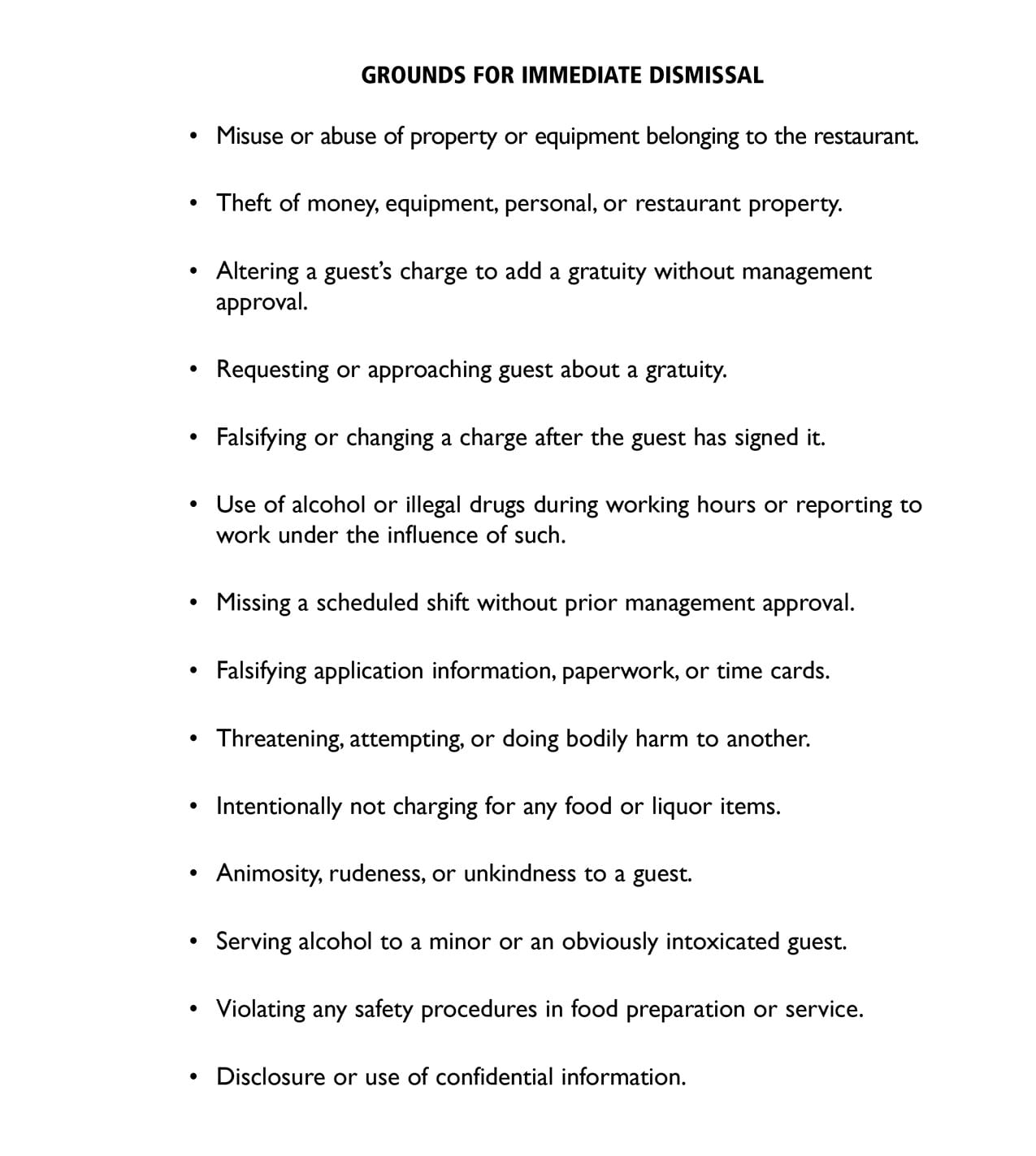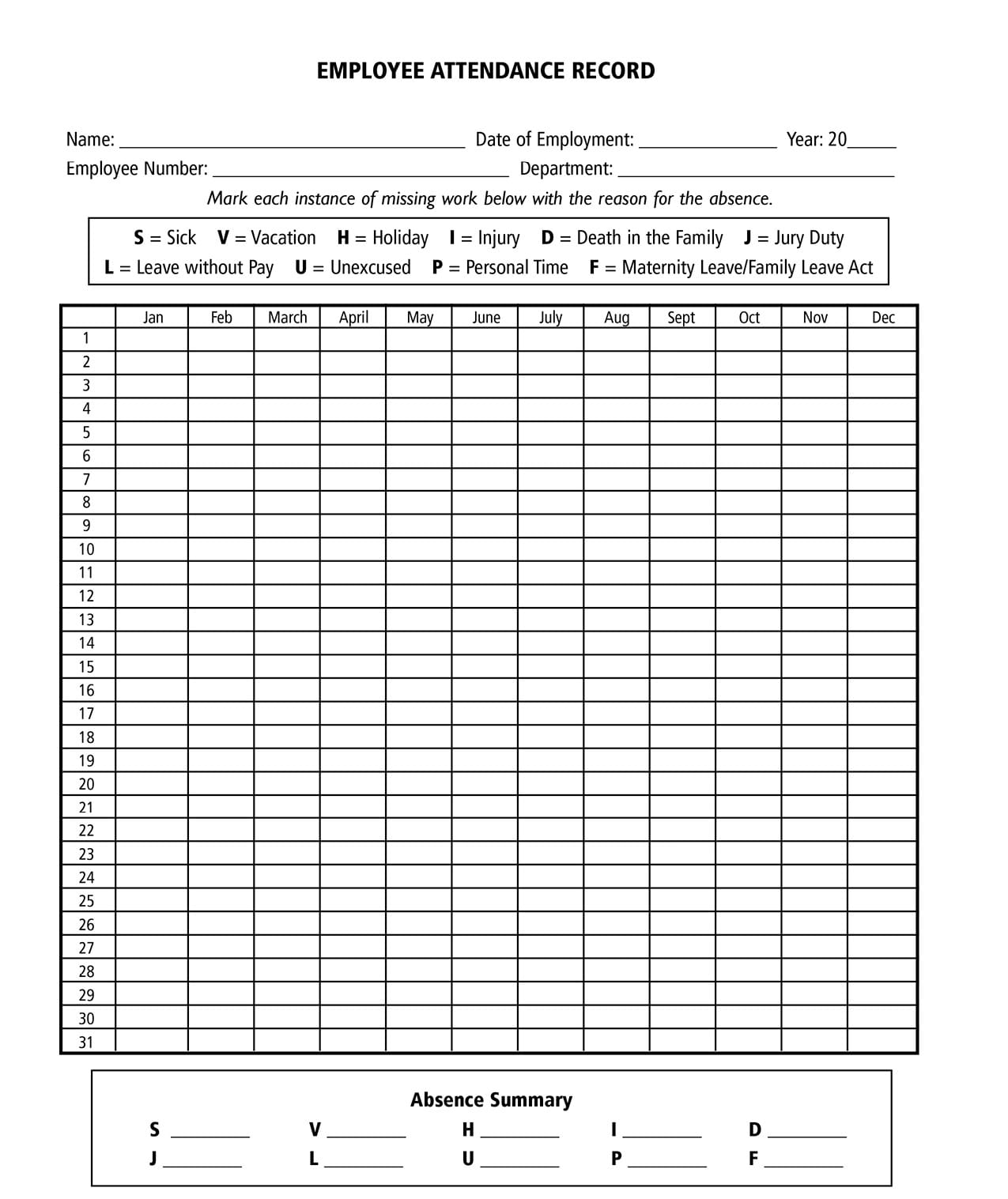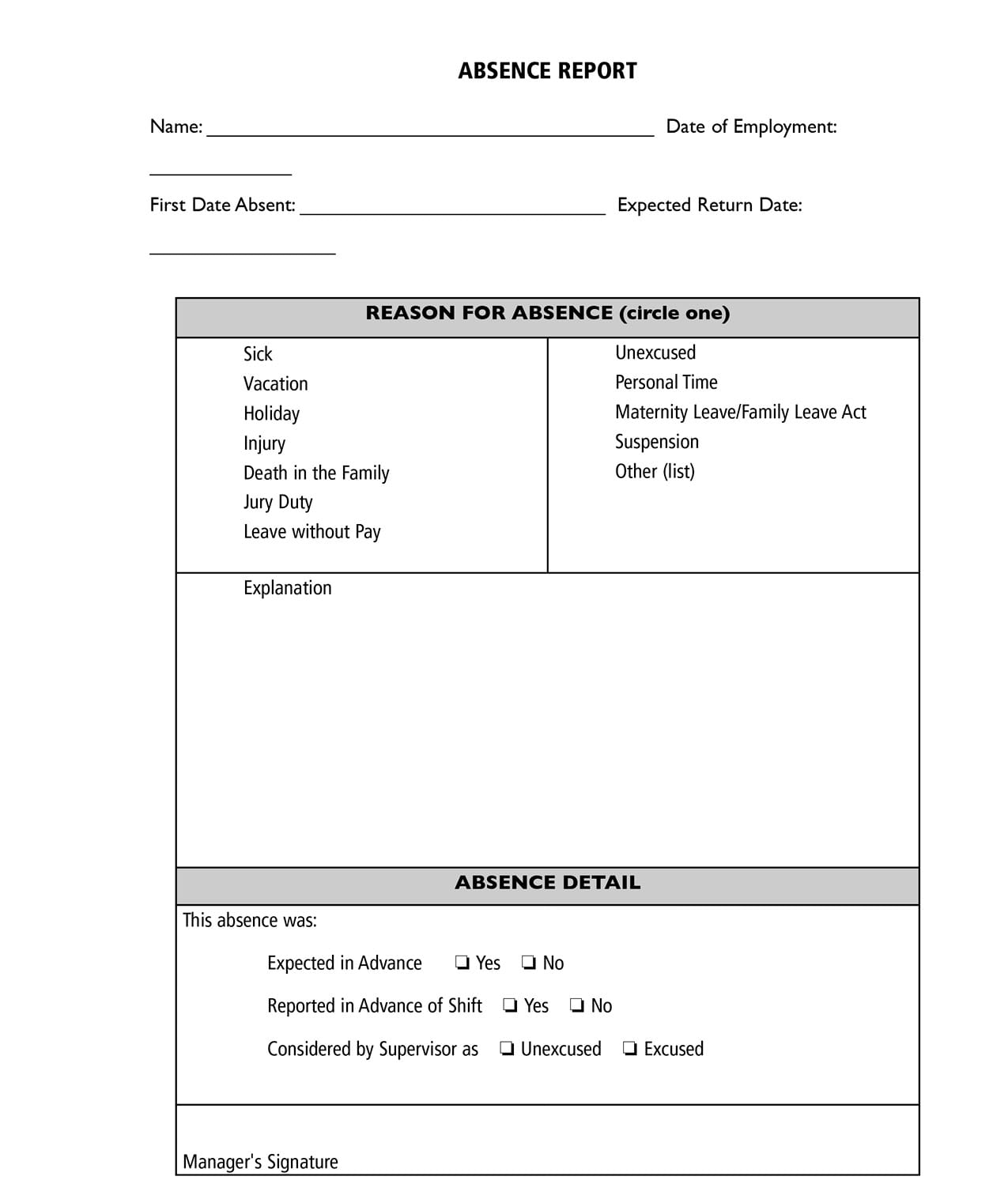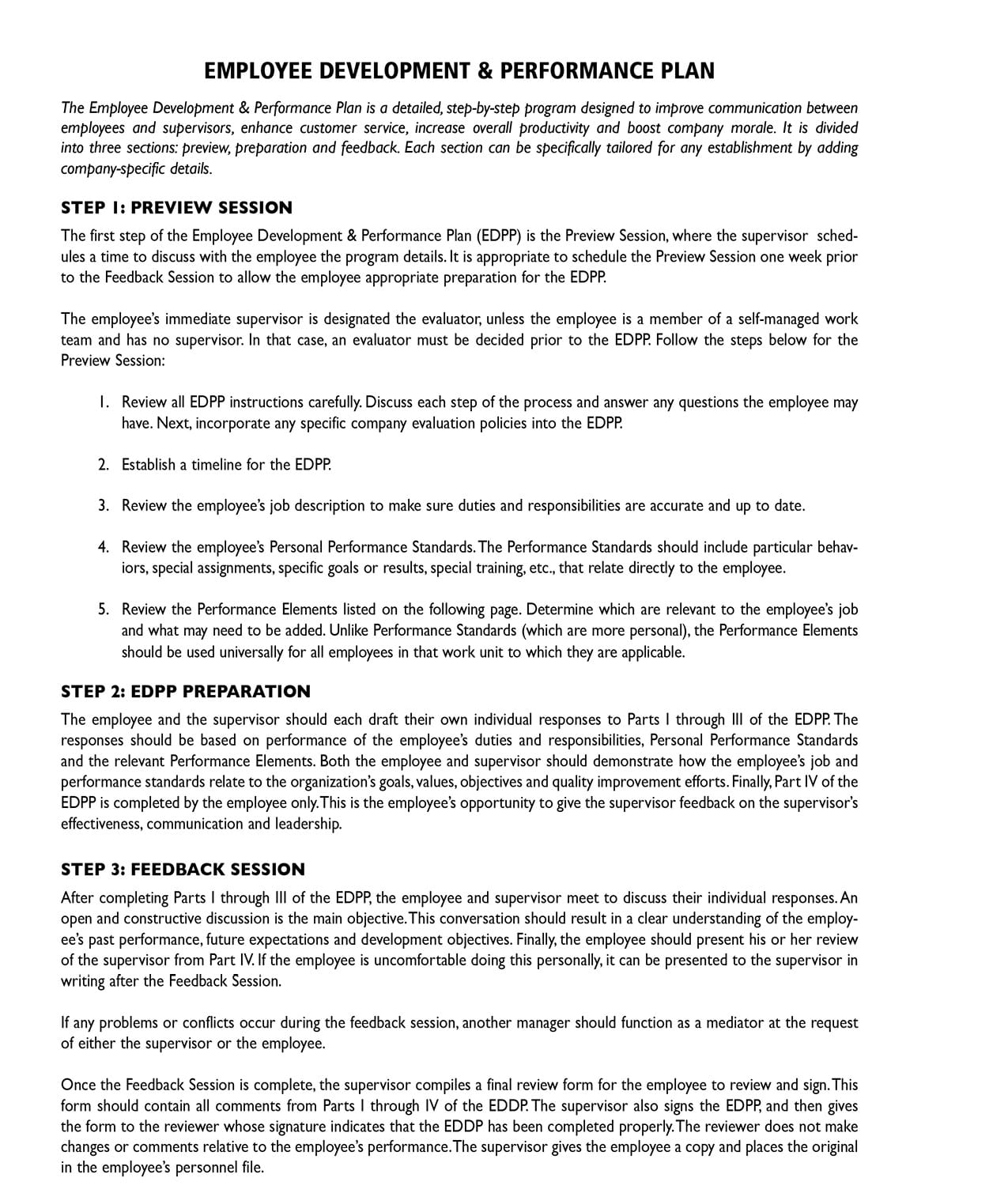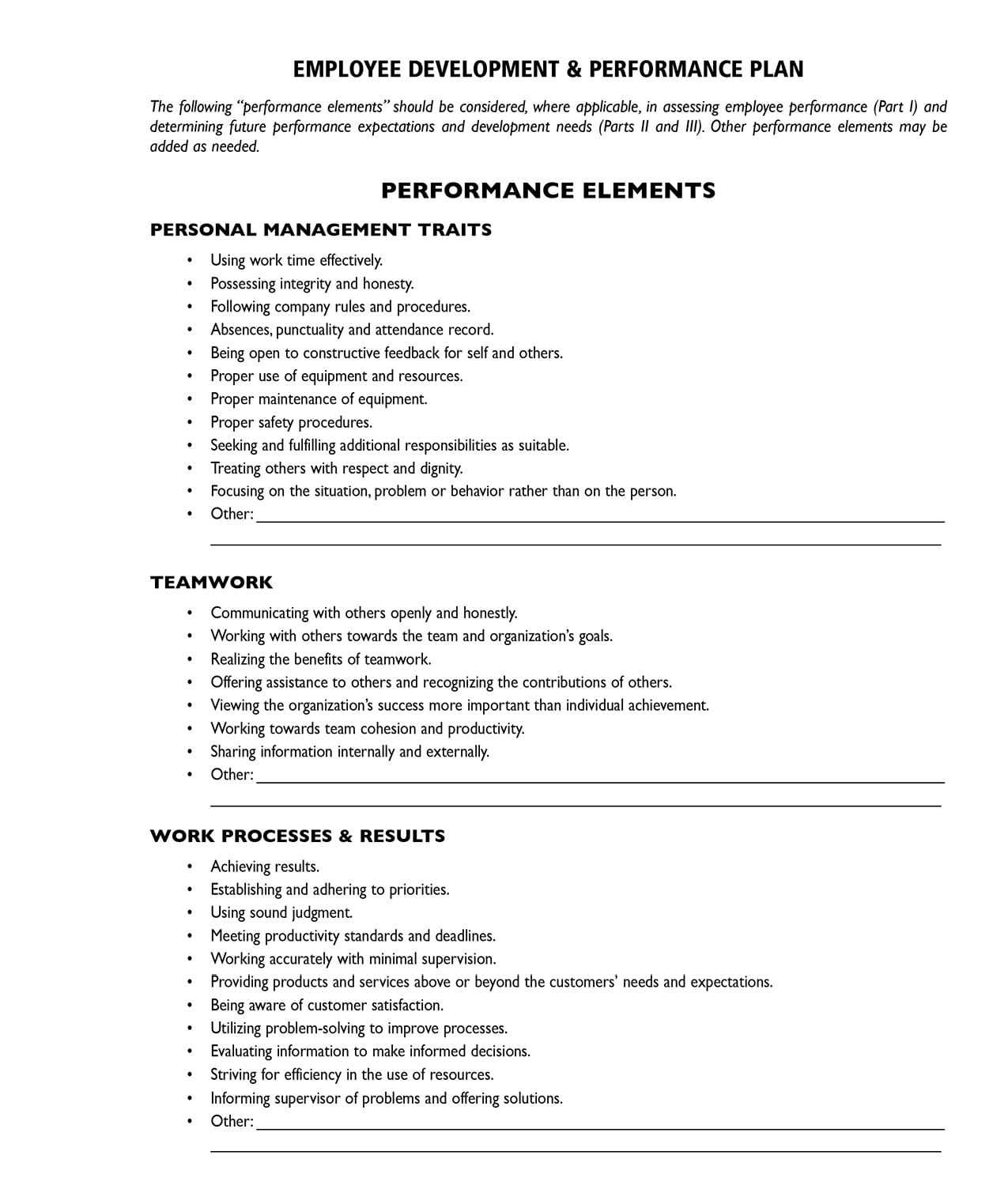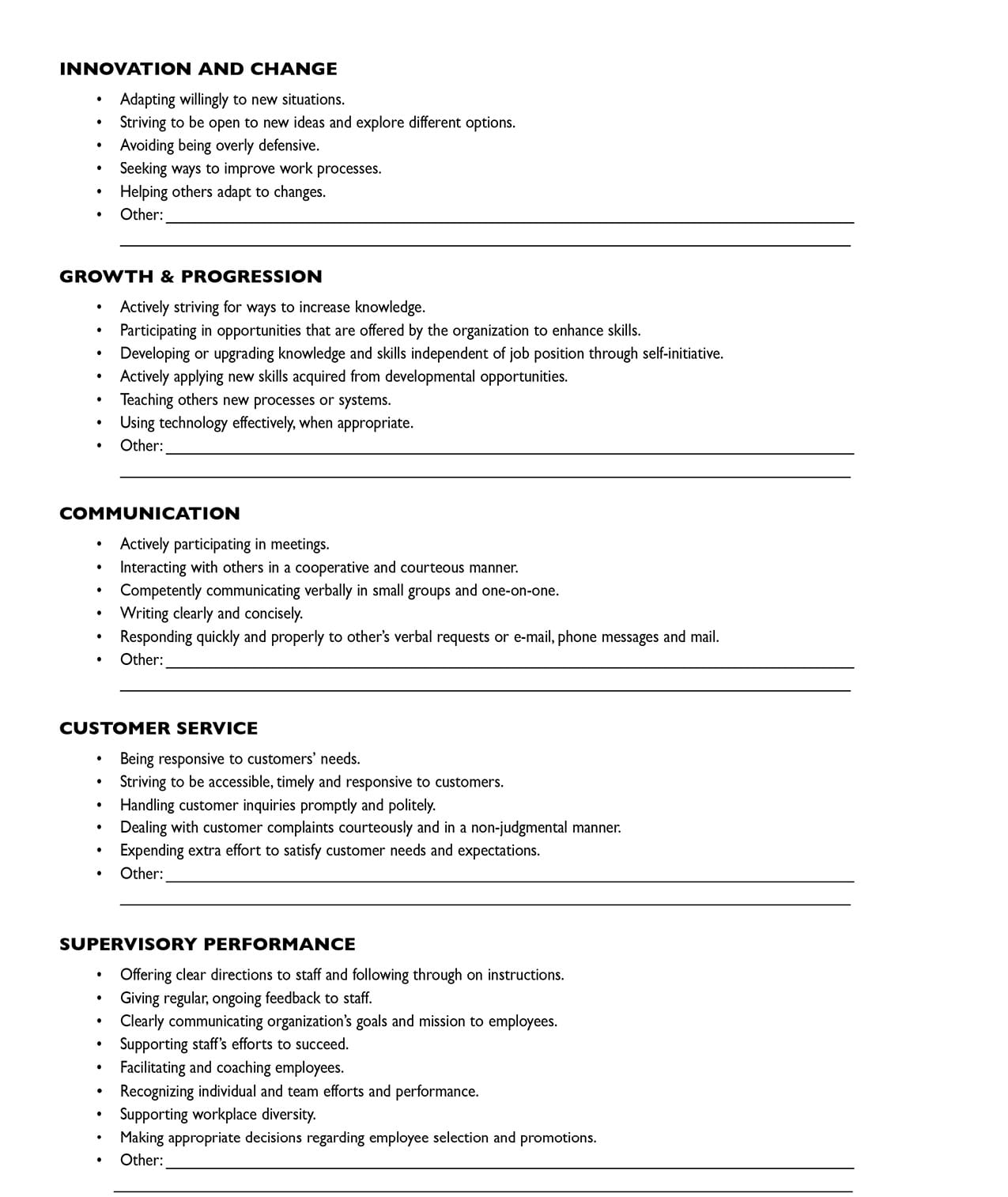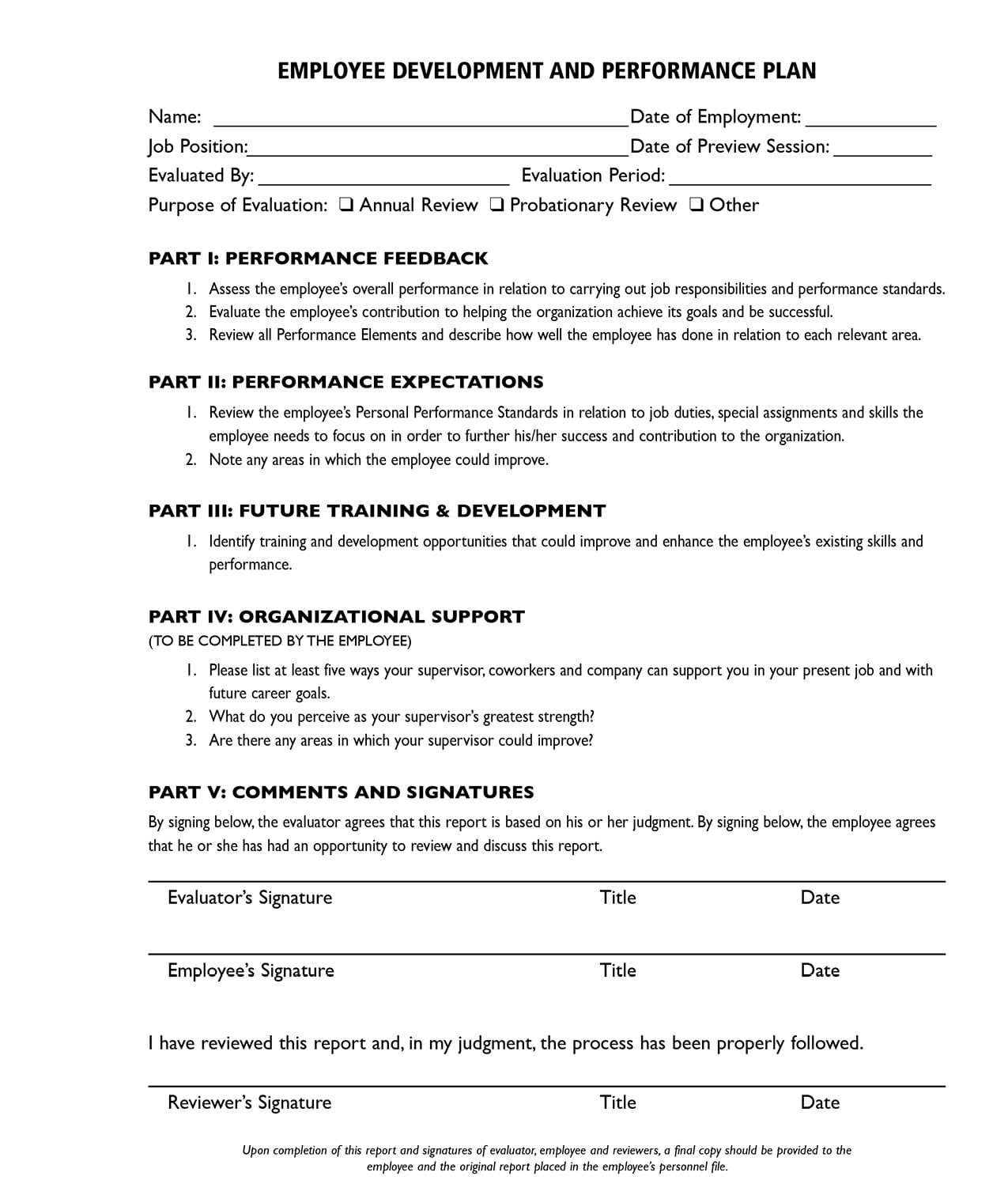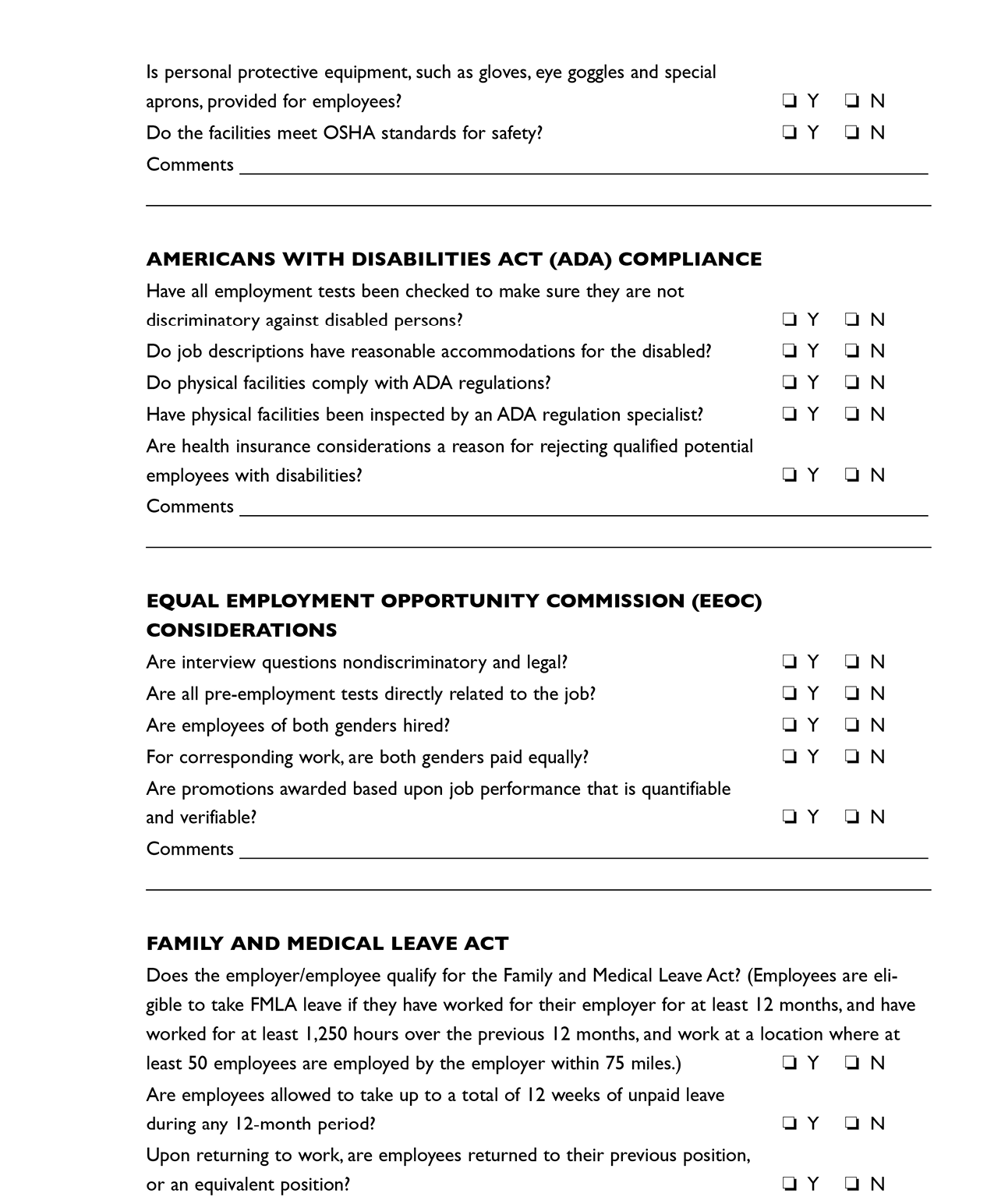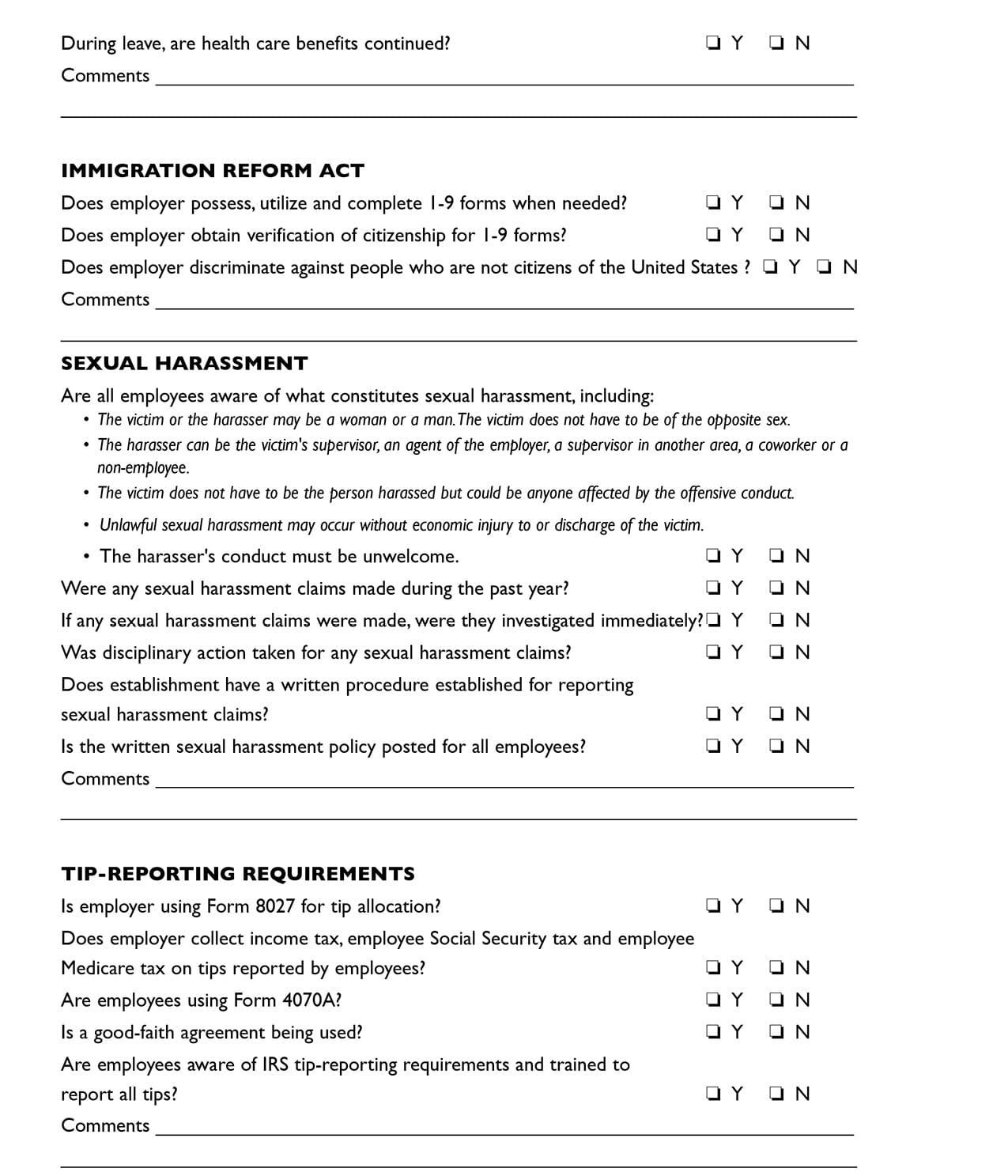![]()
Chapter 26: Training Employees
MANAGEMENT’S ROLE IN TRAINING
As important as it is to hire qualified, trainable employees, the manager is also an important element in making any training program work.
YOU AS THE LEADER
As the restaurant owner/manager, you are the leader of your team of employees. Here are some tips that will help you to become a successful leader:
• Leadership qualities. What makes a good leader? Think back to bosses you had during your early years in food service. Who stands out and why? You probably remember the managers that respected employees, showed concern for their staff, and were not afraid to pitch in wherever needed. These are all qualities that make a good leader.
• Do as I say and as I do. If you do not want your staff to hang around the back booth chatting when business is slow, do not engage in this activity yourself. Show them how you want them to act as well as telling them. If management does not show concern for how the customer is treated, then employees are unlikely to perform any better.
• Be on the floor during the dinner and lunch rushes. As you walk through the dining room, if you see a plate that a customer has finished with, bus it. If water glasses need refilling, refill them. You will show your servers that you care about the customer enough to do these things and they will emulate your behavior.
• Know yourself. Know your own strengths and weaknesses; capitalize on the former and minimize the latter. If you have poor math skills, hire an accountant to compensate for this weakness. If your people skills are strong, make sure you spend a lot of time on the floor with your employees and customers.
• Be part of the team. Pitch in when someone is missing. Your employees will appreciate your effort and respect you for lending a hand rather than managing “from on high.”
• Always remember that your employees are individuals. Accept the different styles of your employees, but always expect good performance. Be alert to the training and development needs of each individual employee. Meet those needs.
• Be fair and consistent with policies and procedures. Treat all your employees equally.
• Do not show favoritism. If you dock one employee’s pay for an unexcused absence, do not look the other way when the next employee is a no-show with no excuse.
• Reinforce positive behavior. The saying “you catch more flies with honey” is true. You are more likely to get the behavior you want out of your employees if you reward them for acceptable behavior. While you always have to discipline for inappropriate behavior, let someone else know they did a good job and that you appreciate it.
• Help your employees relate to the bigger picture. Employees can easily get bogged down by detail and focus on one dish or one table, to the detriment of the rest of their duties. It can be difficult for them to step back and see how their behavior might affect the business and profits as a whole. Point out the benefits of good service: happier customers and more income for both the restaurant and themselves.
• Encourage communication. Encourage your staff to communicate with each other and yourself. Let them know that you want to know what they need and what they appreciate. By understanding their needs, you will make working together much easier.
• Be careful not to assemble a team of “yes men.” Creative solutions to problems come from diverse points of view. Do not surround yourself with other management team members who think just like you do. Encourage those who disagree to speak up. You may want to consider rotating meeting leadership to make sure your own point of view is not the only one heard.
• Be creative when looking for solutions. In meetings, when you are looking for solutions, state your target/problem simply and clearly. Solutions are found within a range of possibilities with no single answer being right. Begin by brainstorming and appoint one or two “recorders” to keep track of all ideas. Halfway through, change recorders and also freshen the mix of the group. Encourage people to “play” and enjoy using their imaginations. Consider the suggestions logically and inventively.
• Dealing with conflicts. Conflict resolution is a tricky part of being a leader. Conflict is not always a negative thing and can often be useful. Encourage people to speak up about what bothers them. Engage in active listening when dealing with a conflict. Also be sure to set norms for politeness, good behavior, and honesty.
TEAMWORK
Although you may be the leader in your food service organization, you cannot do everything. Consideration for colleagues and cooperation create a more productive environment, especially when circumstances are particularly demanding. Working and thinking as a team helps to create an environment of collaboration, which will help your restaurant’s ability to make profits. Teamwork can increase your productivity, improve decision-making, maximize the use of your human resources, and make better use of your inventory. Make problem-solving an automatic function of daily work. Customer service also benefits from smooth teamwork. You can improve the bottom line — profitability — by efficient team-building.
WHAT IS A TEAM?
A team is a manageable number of people with similar or coordinated functions working together for the common goal of providing seamless service. Usually two to 25 people (ideally ten to 15 people) make a manageable number of people. You can think of teams as front-of-the-house teams and back-of-the-house teams. If you have a large staff, one particular position could be a team or your teams could be organized by shift. The members of a team must have common goals, similar or complementary functions, and equal responsibility for team performance. Everyone should have the same definitions of “team” and “teamwork” for the teams to work.
To delegate some responsibility, you must choose team leaders. These people do not have to be the best performers, but they should be people who can motivate and train others and carry a full load. They will be the “naturals,” the ones to whom others naturally look. Make sure you have more than one leader for each team so that changing schedules can be accommodated and no shift will be without a team leader.
Goals exclusively established by management will never be fully accepted by the group. Managers should encourage employees to share in the task of goal-setting and determining criteria to assess whether or not goals have been achieved. By allowing employees to participate in decision-making, managers help let the employees take ownership of their jobs and of the operation, When ownership occurs, employees are much more willing to go the extra mile and ensure performance standards are being maintained. If they have a stake in the decision-making, they have a stake in the outcomes.
In many ways, team leaders function as management. Team leaders should hold the team together and define individual member roles. Team leaders also guide and train team members. They also ensure open communication among team members and solicit solutions from within the team. Other functions team leaders can fulfill include monitoring performance, providing feedback, working as a liaison to other team leaders, and communicating and demonstrating that team success is the responsibility of each individual on the team. Team leaders can also act as spokespersons for presenting problems or ideas to management. You also can let them train team members and become part of your restaurant’s overall training program.
TEAMBUILDING
Food service requires teamwork. Servers must have the cooperation of the kitchen staff and the kitchen staff must have the cooperation of the dining room staff. All employees must be able to work harmoniously with all other employees if they are to achieve good results.
COURTESY
Courteous behavior is as important in relationships with other employees as it is in dealing with the customer. It is hard to be courteous in the heat and hurry behind the scenes in the restaurant, but courtesy pays dividends. A courteous salesperson soon makes friends of fellow employees.
An employee can show courtesy to fellow workers by avoiding personal or slighting remarks about the appearance or actions of another person, avoiding whispering or laughing with one employee in the presence of others who may think that they are being ridiculed, being careful not to cross fellow workers’ paths or to bump into them, using “please” and “thank you” when asking for and receiving favors from fellow workers, and being tolerant of the manner and working habits of others.
COOPERATION
Cooperation implies mutual helpfulness. It is reciprocal in character. One cannot receive cooperation from others unless he is also cooperative. One cannot expect to receive help unless he is also willing to give help.
Helping a fellow worker who needs assistance:
• Taking an order for another employee who may be delayed and then turning it over for him to serve.
• Helping another employee finish side-work when that employee has completed his own work.
• Keeping a serving stand, that is used jointly, cleared of an accumulation of soiled dishes.
• Letting bus people know when supplies and special services are needed far enough ahead that they may be able to keep supplies on hand.
• Helping to clear tables in his free time.
FRIENDLINESS
To secure the cooperation of other people, the employee must give them reason to like him. Courtesy, cooperativeness, and fair dealing are important factors in securing the friendship of others. The friendly employee will endeavor to maintain pleasant relations with fellow workers during working hours and will participate in group sociability outside of working hours. The employee will be polite, courteous, and friendly to every employee and avoid joining cliques or favoring certain individuals.
Engage in team-building behavior. A team falls apart easily if you fail to reinforce that they are a team working for a common goal. Let members get to know each other in a casual setting. Have a staff party, take instant photos of teams, and put them on bulletin boards in the back of the facility. You can also create a scrapbook that includes personal details, pets, family, and personal goals. Update it regularly.
If one member of a team does not perform, the whole team suffers and team trust is compromised. Be sure to reward good behavior, but also set conditions for poor behavior. Make sure everyone knows the standards. It is not useful simply to say, “Don’t make mistakes” or “Don’t have accidents.” Find out why an employee is having problems and work together to find the cause and a solution.
Not all teams are the same. Kitchen team members are more specialized and less likely to switch functions. Front team members have primary but not fixed responsibilities and are more likely to interchange functions, covering for each other for smooth service. Make sure all team members understand the differences and what their own responsibilities are.
A slowdown in one function can upset the entire flow of service to all customers. The team leader can define and assign secondary task responsibilities during the daily meeting. Sometimes a buddy system works well to adjust front-of-the-house staff to shift away from the “not my job” syndrome. The server who is tipped according to service performance is affected in the long run by someone else’s temporary work buildup.
If the same server has regular trouble, then consider additional training. Include answering the phone as one function that may need coverage.
TEAMWORK TRAINING
There are online sources available to help train your management and staff in teamwork. For training materials and information on teamwork training, visit:
• www.facilitationfactory.com/interstitial.html
• www.temeculacreek.com/ball.htm
BUILDING TRUST AND TEAM SPIRIT
Ask the dishwasher what he does. If he replies “I wash dishes,” you have some work to do. If he replies, “I make sure that the restaurant can function properly by providing a constant supply of clean dishes,” then you have succeeded. Every person in the organization is important and has a critical role. Ensure that employees know their roles in your organization. To get the best from your team, you need to build trust. Here is how to do so.
LEVELS OF TRUST
When working in a team environment, there are three levels of trust:
|
LEVELS OF TRUST |
|
|
Level |
Typical Response |
|
High |
“I’m not concerned because I’m certain that others will not take advantage of me.” |
|
Low |
“I need to see that I get my fair share and others don’t take too much.” |
|
None |
“I’ll get them before they get me.” |
You can build trust many different ways. Try spending social time together. Make some jobs two-person jobs (for example: cleaning, napkin folding, etc.). Encourage discussion of problems and issues and let staff know that asking for help is okay. Improve communication and eliminate fear of ridicule or reprisal. Make room for the personal comments: “I feel,” “I think,” “What do you feel about…?” Provide positive reinforcement for helpful behavior and allow time for trust to grow.
BANISH UNTRUSTING BEHAVIORS
Make sure that no one on your staff or management team engages in the following behavior:
• Ignoring people.
• Embarrassing someone in front of others.
• Failing to keep confidences.
• Avoiding eye contact.
• Withholding credit where due.
• Interrupting others.
• Not helping when able.
• Taking over for someone who does not need help.
• Breaking a promise.
Lead by challenge and positive reinforcement. Set goals just ahead of expectations and reward employees when goals are reached. Try using scoreboards: 102 days since last accident; 2,453 meals served; 1,134 orders with no mistakes. Continually set new goals, but do not make goals too hard to achieve. Be sure that people understand the targets you have set for them; people feel secure in knowing what is expected.
Recognize, reinforce, and compensate outstanding performance. Recognition by itself is reinforcement and may not need compensation. A specific and timely “well done” often holds as much weight as monetary compensation, but monetary rewards have their place as well. Have a ready supply of movie passes and other “goodies” to distribute to the deserving. Even keep some in your pocket for any meritorious action you just happen to see in passing. Match the size of the reward to the size of the performance accomplishment. Have an annual “Academy Awards” ceremony with categories suited to your business (Biggest Helping Hand, Most Infectious Smile, Most Improved Performance) Make it a big deal, with invitations and a special menu. Let each employee bring guests. Set up a committee to select the winners.
Sales incentives. Start with the end result in mind and work backwards. Communicate specifically. Tell your staff you are looking for a particular percentage increase in dollar sales of some item, such as desserts. Break that down into how many desserts per day, per shift, per person need to be sold and be sure that it is a manageable goal for each team member. It is not a quota; it is a goal for the team. It allows for more than one “winner” while the whole team wins. It may also provide an opportunity to motivate the “slower” employees back into peak performance. Everyone should be in on both planning and carrying out incentives and the reward system for goals accomplished. Some rewards for good work include money, recognition, time off, a “piece of the action,” getting favored assignments, promotion or advancement, freedom, personal growth, having fun, and prizes.
TRAINING OTHERS TO BE TRAINERS
You could do all the training for your organization, but it is not feasible. You will need to delegate some training activities. How do you determine who would make a good trainer?
• Job competence. Anyone you choose to train others must have job competence. Otherwise you are only going to teach new employees incorrect procedures and sloppy work habits.
• The ability to know how to train. Some people are natural teachers. Others are good at teaching but may need some guidance and instruction in proper teaching methods. Trainers should be taught the basic principles of adult learning and ways to organize and present training materials/topics.
• Leadership qualities. Trainers should have strong leadership qualities.
• Professionalism. Trainers must be professionals in their approach and attitude towards their jobs. They must consistently demonstrate high levels of performance standards and a commitment to excellence.
TRAIN MANAGEMENT FIRST
Before you start to train your wait staff, make sure that your management and team leaders are properly trained. Many people in restaurant management positions are promoted through the ranks and many of these people have no management experience. Get them that training so they can manage the rest of the staff effectively. If you do not, you will start seeing problems such as turnover and sloppy work. Consider the following training possibilities:
• Training resources. For a complete range of training resources, including books, videos, Software, and posters, see www.atlantic-pub.com. See a list of helpful titles at the end of the chapter.
• Hospitality management courses. Check with your area colleges and vocational schools. Many have hospitality management programs. It would be wise to enroll your new managers in one of these programs.
Online courses
The number of online options available to the restaurant industry is growing. Check out the following websites for distance learning courses that can be useful to your managers:
• www.ecornell.com: Cornell University School of Hotel Administration’s online courses include: “Managing People More Effectively” and other courses in hospitality marketing, management of hospitality, human resources, and hospitality accounting. You can register online or over the phone at 866-ecornell (866-326-7635).
• www.ahma.com: The American Hotel and Lodging Educational Institute also offers many hospitality and management courses online.
• www.ciaprochef.com: The Culinary Institute of America has recently introduced online courses.
• www.atlantic-pub.com: Atlantic Publishing offers ServeSafe® management certification programs and courses.
ROLE OF COMMUNICATION IN MANAGING YOUR STAFF
Communication between you and your staff is just as important as the communication between your servers and your customers.
There are four basic types of communication: speaking, writing, acting and listening.
SPEAKING
Effective speaking is critical in training. If you are planning to speak, you must be sure that your message is understood. When preparing to speak for a training session, make sure you prepare. Ensure that the message you are trying to get across is clear and focused. Spend some time practicing your speech. Ask your family and friends to listen to your practice sessions and ask for feedback on how to communicate more clearly. Practice in front of a mirror to get a sense of your “stage presence” and see what you can do to make yourself a more engaging and focused speaker.
Here are some things you should keep in mind when practicing and when speaking:
• Make eye contact with your audience. Do not just focus on the same two people if it is a large group — shift your focus to various parts of the room to engage your audience.
• Control the speed of your voice. When nervous, many of us tend to speak at a rapid pace and it will be difficult for your audience to focus on your message.
• Make your voice varies when you speak. Nothing will put people to sleep faster than a monotone speaker.
• Be enthusiastic and sincere when speaking. It will help you connect with your audience and help them to retain your message.
• Move around when you speak. If you stay planted in one spot, it will be easy to lose people’s attention. If you move some, but not excessively, it will help keep your audience engaged.
• Ask the audience if they understand. If you feel that some of your concepts may be misunderstood, try restating them in different ways during the session.
• Pay special attention to your opening and closing statements. These should be attention-grabbers. You want a strong opening statement to ensure you have captured your audience’s attention and you want a strong closing statement so they will take your message away with them and remember it later.
WRITING
Writing skills are also important to people in management positions. As a trainer you will write various training programs, job descriptions, and performances evaluations. When writing training materials, keep these following tips in mind:
• Write in short, easily understandable phrases. Your employees will come from a variety of backgrounds; make sure that your training materials can be understood by everyone.
• Check your spelling and proofread material for errors.
• Use informal language that will not intimidate or bore employees. You want them to read the materials you are providing.
There are a number of good writing and grammar references available:
• The Elements of Grammar by Margaret Shertzer
• The Elements of Style by William Strunck, Jr.
• Roget’s Thesaurus
• The Gregg Reference Manual by William A. Sabin
• A dictionary
ACTING
We often forget that body language can communicate as much as the spoken or written word. Focus on your body language to make sure you are sending the right message. Learn to read others’ body language so you can tell if you are getting your point across.
If a listener is engaged, she will have open arms (not folded across chest). She will lean forward. If she is bored, she will stare into space, tap her foot, doodle, or slump in her chair. If she is listening and reflecting, she will tilt her head, nod, blink frequently, and make a lot of eye contact. If your listener is combative and wants to speak, she will stare at you and tap her foot or a pencil.
LISTENING
Listening is one of the most important activities you will engage in as a manager/trainer. By listening to your employee you will get a sense of what is lacking in your organization and what type of training needs to take place.
Engage in active listening. How many times have you caught yourself daydreaming or planning when you were supposed to be listening to someone? It happens to us all at times. When communicating with your staff, engage in active listening. Make sure they know that you have heard them. As you are listening, nod, lean forward, and maintain eye contact. Using short verbalizations such as “I see” or “uh-huh” lets the person know you are actively following them. Verify that you understand by repeating. You can say, “I hear you saying …” or “You seem disturbed by….” Make sure to ask open-ended questions, encouraging the other person to speak, such as “How did you feel when that happened?” Also be sure not to interrupt the speaker and seek clarification when points are not clear.
GENERAL COMMUNICATION TIPS
• Eliminate negative speaking. The words we choose have a major impact on how people hear what we are saying. Replace phrases such as “I can’t,” “I should have” and “What’s wrong with...” with phrases like “I haven’t yet,” “Starting now, I will,” and “How can we improve?”
• Overcome cultural barriers and achieve diversity. The restaurant industry has a very diverse employment base. Teach yourself and other employees tolerance and show respect for all race, gender, sexual preference, and religious differences. If you have a bilingual staff, you should also provide language assistance, including English for foreign speakers and foreign words/phrases for English speakers. (See www.atlantic-pub.com for simple food service communication guide books.) There are many sources for bilingual training. Berlitz Languages Centers can provide group training. For the center nearest you, call 800-457-7958 or log on to www.berlitz.com. Language Learning Enterprises also offers tutoring and training. They can be reached at www.lle-inc.com. The National Association for Bilingual Education tracks federal polices that can help employers. You can reach them at www.nabe.org. Worldwide Language Center is another training resource that can tailor instruction to a restaurant environment. Call them at 703-527-8666 or log on to www.worldwide.edu. You also might check with area colleges; you may be able to find a college graduate student willing to take on a freelance project. For cultural diversity training products, visit HR Press’s website at www.hrpress-diversity.com.
• Watch interactions amongst staff to identify those being excluded. Ask those excluded what they feel would make them become part of the team. A good way to include loners is to get mixed groups together for “games” and coach them and involve all employees in decisions.
MAINTAINING PERFORMANCE STANDARDS
Once your training program is implemented, you want to continue monitoring employee performance to ensure performance levels stay within your high standards. People tend to forget and slack off after a period of time, so it is very important for you to closely supervise your employees and correct these slippages when they occur.
Management’s job is not over when training is complete. You still need to give your employees feedback on how they are doing, letting them know if they are maintaining the performance standards you expect. One way is to develop a system to monitor employee performance and communicate how they are doing. There are two general ways to monitor employee performance informal and formal.
INFORMAL PERFORMANCE MONITORING
This type of monitoring is done on a day-to-day basis and includes actions on the manager’s part such as observing employees at work, tasting food, and checking in with customers. Of course, it is only part of the informal monitoring process; you must also communicate with your employees. You must let them know when they are performing well and when they need to improve.
When communicating with employees about performance issues, you will be praising or criticizing. Many managers focus too heavily on criticizing employees for poor performance, thinking it is the best or only way to change behavior. Praise for work done well can be a strong reinforcement for the behavior you want to see. Employees need to know what they have done right as much as what they have done wrong. Praise motivates employees to do a good job by building confidence and pride. Constant criticism will only make an employee resentful rather than a good performer.
When criticizing an employee’s performance, be respectful — give her the benefit of the doubt and always listen. Make sure you get all the facts before making a judgment. Criticism, when done constructively, is beneficial in improving employee performance and building skill level. Here are a few tips on making constructive criticism:
• Criticize the action, not the person. It is the action that is wrong, not the person doing the task. Do not criticize an employee’s character or intelligence.
• Do not focus on the trivial. If it is one of the busiest nights of the year, do not focus on how messy the kitchen was during dinner rush — focus on how many meals were prepared correctly and on time. You will only gain your staff’s frustration and ire by focusing on the trivial.
• Be clear. Make sure you are clear when explaining what the employee is doing incorrectly and explain the correct way to accomplish the task.
• Do not get angry. Anger will only provoke fear and cause a loss of motivation in your employees.
FORMAL PERFORMANCE MONITORING
Formal performance monitoring goes beyond the daily observing of employee behavior. In formal performance monitoring you will want to focus on particular aspects of job performance and you must develop specific ways to monitor these aspects. For these aspects you need to 1) set standards, 2) measure performance, and 3) provide employees with feedback on their performance.
Setting Standards
Your standards must be specific and clearly defined. They should also be achievable to prevent employee frustration. A standard may be for a cashier to come within $1 of balancing his cash drawer or a server to sell at least seven desserts.
Measuring Performance
Measurements must be fair and communicated to all employees.
Provide Feedback
People cannot change inappropriate or unwanted behavior if no one tells them to. Employees not meeting the standards need to be told so and corrective action must occur. Employees who are meeting or exceeding the standards also need to be praised and recognized for their efforts. Remember, feedback should be given regularly. Here are some ways to measure performance:
• Mystery shoppers. Many restaurants hire people to dine anonymously at their establishments and then report back to management on the service they have received. These individuals can tell you how the food was presented, how they found the service, and how long they had to wait to be seated. You can find these services online at the following websites Secret Shopper at www.secretshopnet.com, Mystery Shopper at www.mysteryshopperjobs.com and Mystery Shop at www.mysteryshop.com
• Comment cards. Comment cards are a good source of information for measuring performance. Since they are anonymous, people are usually quite candid in their remarks.
• Talking with guests. Always make it a practice to walk around the restaurant and check in with the customers on how their meals were and how service was. Most people appreciate the attention and concern of management and many will be very honest in their comments.
ANNUAL PERFORMANCE REVIEWS
Performance reviews are another important way to give your staff feedback on how they are doing. These should never take the place of daily feedback; they should be used in conjunction with it. Nothing you say in a review should come as a surprise to your employee. Always give your staff regular feedback, both positive and negative. Performance reviews focus on how the employee is doing overall rather than focusing on specific tasks or job areas. Performance reviews usually consist of a manager filling out a performance form and a meeting between the manger and staff member to discuss the employee’s performance. The purpose of the performance review is to maintain good performance and improve poor performance. It serves a purpose in your training program because it provides you with information on types of training the employee needs or wants. There is a sample evaluation form at the end of this chapter.
Remember, you are evaluating an employee’s performance in relation to the standards you have set up. Refer to the job lists you developed when developing your performance review forms. Consider the following aspects of conducting performance reviews:
• Intent of reviews. The results of performance reviews are two-fold. First, the supervisor must use a review in order to judge how well the employee is doing her job and whether or not the employee is eligible for a wage increase. Additionally, and perhaps more importantly, reviews are used to set goals for employees.
• Setting performance review goals. When setting goals for improving performance, be sure to make them concrete. Give the server a quantifiable way of reaching her goal. Suggest that the server try to sell ten desserts per shift to increase her up-selling or maybe that the server who lacks customer interaction skills learns the names of two customers per shift.
TYPES OF REVIEWS
There are two kinds of performance reviews. One uses input just from the employee’s supervisor. The other type uses input from other staff members as well. Many companies have switched to a performance review system that involves other staff members. This type of review, called “360 degree feedback,” involves the supervisor collecting information from staff members who work with the employee. The supervisor then takes this information and her assessment of the employee and uses this information during the evaluation interview. At no time are names used, so the other employees can feel comfortable giving honest feedback. The website
www.360-degreefeedback.com has specific information pertaining to the “360 degree feedback” process. Additional sites with human resources information include the International Association for Human Resources Information at www.ihrim.org, www.business.com/directory/human_resources/index.asp, and The Society for Human Resource Management at www.shrm.org. You can download performance appraisal forms and related material for $39.95 at www.performance-appraisal-form.com.
REVIEW GUIDELINES
• Be specific. How do she need to improve? Does she need to be faster, more punctual, or friendlier towards guests? Give her specific behaviors you would like to see improved and tell her how to go about making positive changes. If she is doing great, tell her in what manner as well.
• Be fair. It is difficult to review someone, but be as fair and consistent as you possibly can.
• Let the employee speak. Performance reviews should be a dialogue, not a lecture. Let your employee talk about what she thinks she does well and where she might need improvement.
• Discuss what the employee does well. Do not just focus on the negative. Give praise where praise is due.
• Maintain a review schedule. Give your employees annual reviews. You may want to schedule all reviews during a month that is always slow. You could also schedule reviews for employees’ anniversary dates. For new employees, schedule a review in the first couple of months to give them immediate feedback on their new job.
REVIEW QUESTIONS
Some of the behavior you want to find out about in reviews includes the person’s relationship with others, her problem-solving skills, accountability, enthusiasm, and team spirit. Structure your questions accordingly. Focus questions on the following areas:
• Does the employee fulfill her job duties?
• Does the employee use sound judgment in keeping a safe work environment?
• Does the employee assist others with work?
• Is the employee responsible and punctual?
Use a rating system for the questions. Be sure to include an area for comments on the form as well; if someone is not performing their duties, you will want specific information on the problem areas.
REVIEW LOCATION
A performance review should always be conducted on neutral ground. Do not conduct them in your office; the person you are reviewing is likely to feel threatened. The review should not feel like a disciplinary interview; rather, it should be a dialogue between you and an employee with the goal of making the employee more productive. You may want to conduct the review off premises or you could go to the dining room. If you conduct the review in the dining room, pick a table rather than a booth and sit beside the person rather than facing them. This body language will help make the review feel non-confrontational. It is also very important that reviews be conducted in private, so if you use the dining room, do so when your establishment is closed and other employees and customers are not in the room.
REVIEW INTERVIEW
When you go into a review, the employee should not be blind-sided. If you have been having problems with an employee, the review is not the place she first hears about it. If that is the case, you need to look closely at your management practices and your disciplinary policy. Start the review on a positive note, then go into any problem areas, and end on a positive note. Summarize results and tell the employee what those results are, and then talk about future goals. Come to an agreement about what the goals will be and write the plan down. The employee should also have a chance to make comments on the review. Give the employee some time to reflect, and then ask that she make her comments in writing. These comments, as well as the review, should go into the employee’s personnel file. Finally, after the review is over, continue to encourage the employee by providing praise after each step of improvement.
HANDLING DIFFICULT EMPLOYEES
Everyone is not going to be a model employee and you will have to deal with difficult employee situations. As a manger you have to address the issue and find a way to solve it. Difficult employees come in all shapes and sizes. Here are just a few of them:
• The new employee. A new employee is a difficult employee because she does not know what is expected and she needs training in order to reach the desired performance level.
• The inconsistent employee. This type of employee is difficult because he often performs well, but just as often he performs poorly. You know this particular person is capable of doing the job because he has shown you that on various occasions. Often, this employee requires much more feedback than other employees to get him on track.
• The unbalanced employee. These employees are often very good at one job task but only so-so at others. You may have a cook that is an excellent sous chef, but this same employee leaves the kitchen a wreck after the shift.
• Mediocre employees. These are employees that do just good enough. They show up on time and do their jobs, but they do not really produce high-quality work.
• Less than mediocre employee. These employees come just shy of doing their job. They often waste time and are rarely productive.
• The bad employee. These employees do little work, have a high absenteeism rate, and/or do little work correctly.
DIFFICULT EMPLOYEE WARNING SIGNS
• Poor work quality.
• Absenteeism is high.
• Complains a great deal.
• Shows little initiative.
• Does not follow direction.
• Does not cooperate.
• Blames others for mistakes.
• Does not interact well with coworkers.
• Becomes defensive when approached about problems.
DISCIPLINING DIFFICULT EMPLOYEES
Now that difficult employees have been identified, what do you do about them? Most organizations suggest using a progressive disciplinary policy when discipline is necessary.
• Take corrective action. Explain the problem to the employee. Identify the performance problem and talk about the reasons the problem is occurring. Make sure the employee understands the job performance expectations and talk about ways to correct the undesired behavior. The emphasis is on improvement, not punishment. Only after coaching and counseling has been tried several times should a manager move on to disciplinary action.
Once disciplinary action does start, it should take place in several phases:
• Oral warning. The first step in a progressive disciplinary policy is usually an oral warning. The employee will be warned by the manager in a private conversation that covers: 1) what is expected of the employee, 2) the employee is allowed a chance to explain his behavior, 3) the manager making suggestions for correcting the actions, and 4) specify what further disciplinary action will occur if the actions continue. Even though this step is called “oral,” the manager should make a written record of the warning and include it in the employee’s personnel file.
• Written warning. If the employee repeats the offense, the manager will need to record it as a written warning and include it in the employee’s personnel file. The manager should review the warning with the employee and the employee should sign it, indicating he has received the warning and understands.
• Suspension or termination. Some discipline policies allow for a suspension step between written warnings and termination and others do not. You will need to decide which type of policy best fits your operation. If you do include a suspension step, the seriousness of the offense should determine the length of time (all suspensions are without pay). Terminating an employee is a serious step to take. An employee can be terminated due to the frequency or serious nature of misconduct. Very serious offenses may be grounds for immediate termination without following the above progressive disciplinary steps. If you terminate an employee, you must include this paperwork in the employee’s personnel file as well.
When you create a progressive discipline policy, keep the following in mind:
• Be sure your policy is appropriate for your business and your employees.
• Specifically list what behaviors will be subject to the policy and which behaviors will result in immediate dismissal. If an employee is chronically late, you may wish to use your progressive disciplinary policy. If an employee has been stealing, you may state that this type of behavior will result in immediate termination.
• Advise all employees of the policy. You can let new employees know in their orientation. If you need to communicate the information to current employees, include it on the agenda of a company meeting and make sure each employee receives a written handout of the policy.
• Determine how you want to document the policy (how you want to maintain a record of oral warnings, written warnings, and termination paperwork) and decide how long to keep the information on file.
For much more information about hiring, training, and motivating restaurant employees, I recommend the following books by Atlantic Publishing (www.atlantic-pub.com). Some are general restaurant reference while others are topic specific for concerns that restaurant managers may need.
• The Encyclopedia of Restaurant Training (Item # ERT-02).
• How to Hire, Train, and Keep The Best Employees (Item # HTK-02).
• The Food Service Professional’s Guide to Controlling Restaurant and Food Service Labor Costs (Item # FS7-01).
• The Food Service Professional’s Guide to Waiter & Waitress Training: How to Develop Your Staff For Maximum Service & Profit (Item # FS10-01).
• How to Communicate With Your Spanish and Asian Employees (Item # CSA-02).
• The Restaurant Manager’s Success Chronicles (Item # MSC-01).
• Key Words Food Service Employee Translation Poster (Item # KWF-PS).
• The Professional Caterer’s Handbook (Item # PCH-01).
• The Complete Guide to Successful Event Planning (Item # SEP-01).
• The Non Commercial Food Service Manager’s Handbook (Item # NCF-02).
• 8 Posters to Reinforce Good Service (Item # WSP-PS).
• The Complete Wait Staff Training Course on Video or DVD
• The Waiter and Waitress and Wait Staff Training Handbook (Item # WWT-TH).
• Design Your Own Effective Employee Handbook (Item # GEH-02).
• 365 Ways to Motivate and reward Your Employees Every Day – With Little or No Money (Item # 365-01).
• 199 Pre-Written Employee Performance Appraisals (Item # EPP-02).
• Superior Customer Service: How to Keep Customers Racing Back to Your Business-Time Tested Examples from Leading Companies (Item # SCS-01).
